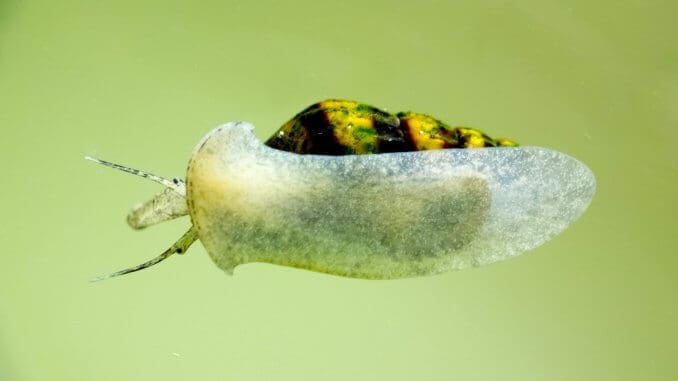
The assassin snail is a freshwater snail of the Nassariidae family. These snails have brown and yellow striped shells and are popular among aquarists because of their hardiness, ease of care, and tendency to eat other pest snails.
Growing to be 0.8–1.25 inches long on average, assassin snails are small and well-suited to 10-gallon tanks.
TABLE OF CONTENTS
Assassin Snail Facts & Overview
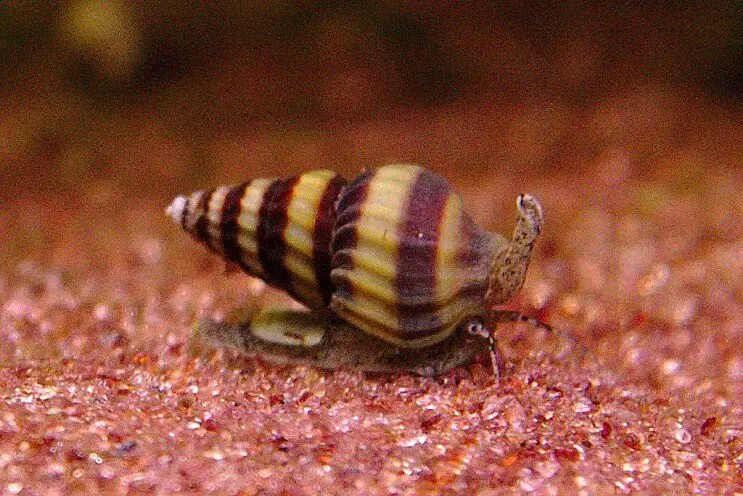
| Scientific name: | Anentome helenas |
| Common names: | Assassin snail, killer snail, bumblebee snail |
| Distribution: | Southeast Asia |
| Size: | 0.8–1.25 inches on average |
| Life expectancy: | 2-3 years |
| Color: | Light beige body with specks, brown and yellow striped shell |
| Diet: | Carnivore |
| Temperament: | Peaceful |
| Minimum tank size: | 10 gallons |
| Temperature: | 70–80°F (21–28°C) |
| pH: | 7.0–8.0 |
| Hardness: | 8–15 dGH |
| Care level: | Easy |
Distribution
The assassin snail (Anentome helena) is native to Southeast Asia, commonly found in the lakes and rivers of Indonesia, Malaysia, and Thailand, though the snail also inhabits reservoirs and streams.
Due to their predatory nature, the species is often kept by fishkeepers who want to reduce pest snail populations.
Adult Size & Lifespan
The assassin snail is a small invertebrate that grows to around 0.8–1.25 inches, though some can reach 3 inches in length. Wild assassin snails are typically larger than those raised in captivity.
With the right care and water conditions, this species can live for up to three years.
Availability
Assassin snails are affordable and readily available at fish stores across the world. This species costs between $2 and $4 per snail, on average, and can be bought online from LiveAquaria, Arizona Aquatic Gardens, and Aquatic Arts.
Assassins are fairly solitary and don’t need to be kept in groups to thrive. However, a large group is needed if there is a large pest population that needs to be taken care of.
Ideally, there should be five snails per 15 gallons of water. A group of this size will cost around $13.
Appearance & Behavior
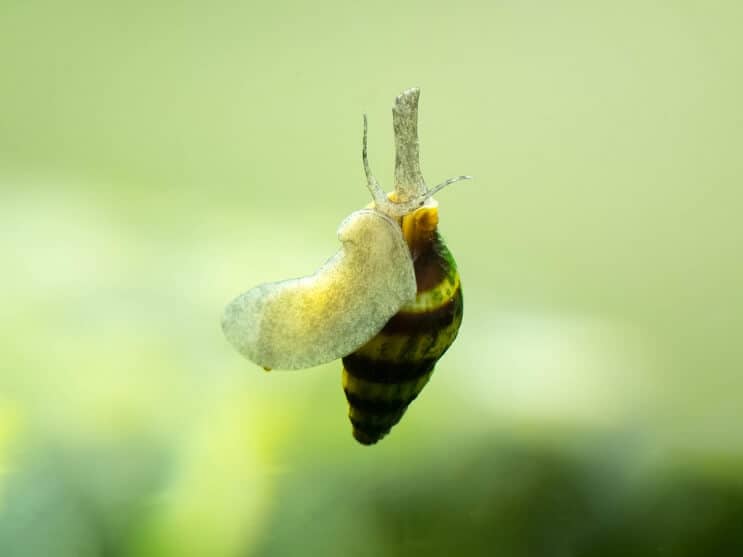
Assassin snails get their bumblebee nickname from their striking yellow-and-brown-striped shell. Although predatory to other freshwater snails, these invertebrates are peaceful toward fish and make wonderful additions to community tanks.
Colors, Patterns, and Size
The assassin snail has a grooved, conical shell with yellow and brown spiral bands. The snail’s body is a light beige with dark specks, and juveniles are paler than adults.
A siphon — a tube-like appendage that helps the snail breathe and detect prey — protrudes out from the shell.
The assassin has a pair of tentacles, a translucent muscular foot, and a special appendage known as the retractile proboscis, which allows it to reach deep inside another snail’s shell and scrape away at its flesh.
Unlike most snail species, assassin snails aren’t hermaphroditic and have distinct sexes. However, sexing them is impossible because females and males share the same appearance, size, and shape.
Signs of sickness or stress include shell changes, discoloration, and inactivity.
Typical Behavior
The assassin snail is slow-moving, feeds on small snails, and spends most of its time at the bottom of the tank burrowed in the substrate.
Despite its predatory nature, the snail gets along well with its own kind and won’t harm fish or large invertebrates. This species also won’t uproot or eat plants, making it ideal for planted aquariums.
The assassin snail keeps to itself and is rarely active during the day, preferring to hunt at night. A snail climbing to the top of the tank is often an indicator of poor water quality.
Assassin Snail Tank & Water Requirements
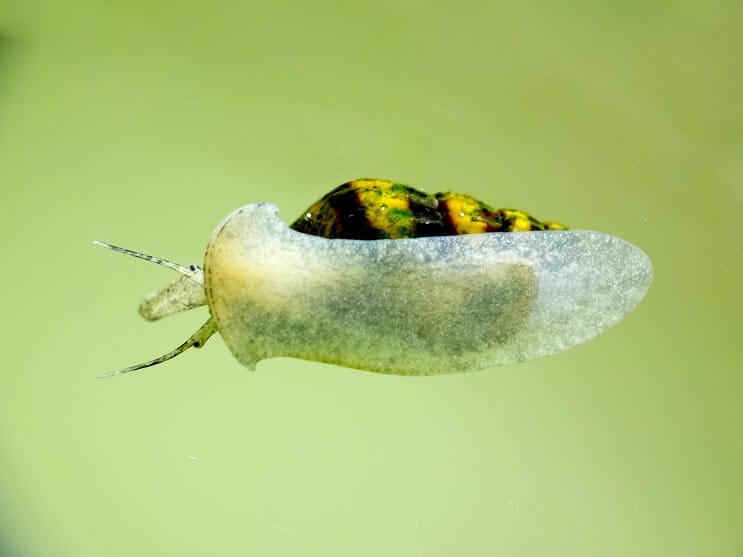
Caring for assassin snails is easy because they’re peaceful and can tolerate a range of tank conditions. However, these invertebrates do best in a setup that simulates their natural habitat.
The tank should be warm, at least 10 gallons, and have a soft-grained substrate.
Habitat and Tank Requirements
The assassin snail prefers moderately hard water on the alkaline side because alkaline contains minerals like calcium that help keep the shell healthy.
Plants aren’t necessary for this species, though vegetation can add some color to a tank and help disperse strong currents. Opt for hardy plants like Anubias and bolbitis.
The substrate should be soft, loose, and thick enough for the snail to burrow in, ideally between 2 to 3 inches. Ensure the tank is at least 10 gallons and increase the size by 3 gallons per snail. Provide this species 8–12 hours of light per day to mimic a natural day to night cycle.
Monitor water temperature with a thermometer and the pH level with a pH meter. Avoid filters that generate a strong current, because assassin snails are accustomed to slow-moving water. Cover power filter intakes to prevent the snail from climbing into the filter and getting hurt.
Water Conditions
The ideal water conditions for an assassin snail are:
| Water type: | Slow-moving freshwater |
| Tank size: | Minimum 10 gallons, increase size by 3 gallons per assassin snail |
| Water temperature: | 70–80°F (21–28°C) |
| Substrate: | Soft-grained, loose substrate |
| Tank setup: | Create climbing spots with driftwood and rocks. Invest in a secure lid to prevent the assassin snail from escaping |
| Acidity: | Slightly alkaline, 7.0–8.0 pH |
| Water hardness: | Moderately hard, 8–15 dGH |
| Filter: | High-quality filtration system that generates low or no current |
| Lighting: | All lighting types acceptable |
| Plants: | Not necessary |
| Bubbler: | Not necessary |
Assassin snails are sensitive to water fluctuations. Only introduce this species once the water parameters are stable and the tank has been fully cycled. Perform partial (25%) water changes weekly to keep nitrate and ammonia levels low.
Care & Diet
Assassin snails are easy to care for because they get along well with fish and tolerate a range of water conditions. In the wild, these carnivores eat worms, dead organisms, and small snails such as ramshorns and Malaysian trumpets.
The most common health issue that affects assassin snails is parasitic infections.
Diet and Feeding
Assassin snails will happily feed on unwanted pest snails in the tank, but other suitable foods include brine shrimp, water fleas, snail eggs, and bloodworms. Your assassin snail’s diet should also include protein-rich sinking wafers on occasion.
It’s good practice to top up live food regularly to ensure there’s always enough in the tank. As a rough guideline, these snails typically eat 1–2 snails per day.
The best time to feed them is at night because that’s when they’re most active.
General Care
Providing a diet rich in protein and calcium, and keeping water fluctuations at a minimum, gives assassin snails the best chance at living long, healthy lives.
Common Problems
Common health issues that affect an assassin snail include:
- Parasitic infection: Causes white spots on the shell, lethargy, and shell changes. Treatment involves breaking the parasite’s life cycle, though this isn’t always possible due to assassin snails’ sensitivity to chemicals. Quarantine affected snails immediately.
- Brittle shell: Causes the shell to break apart and is typically caused by a lack of calcium or poor water quality. Treat brittle shell by giving the snails more calcium and keeping water well-maintained.
- Stunted growth: Occurs when there’s a lack of nutrition or not enough space in the tank. Ensure the tank is an appropriate size and that the snail is fed enough protein-rich food.
Avoid adding medications containing copper into the tank because the chemical is toxic to assassin snails.
Is an Assassin Snail Dangerous?
The assassin snail is harmless to humans. When touched, this species often retreats into its shell and hides, making it easy to pick up and move between tanks. However, handling should be kept to a minimum to avoid stressing the snail.
Like all freshwater snails, assassin snails can harbor parasites and should be quarantined for two to four weeks before introducing them into the main tank.
Assassin Snail Breeding & Eggs
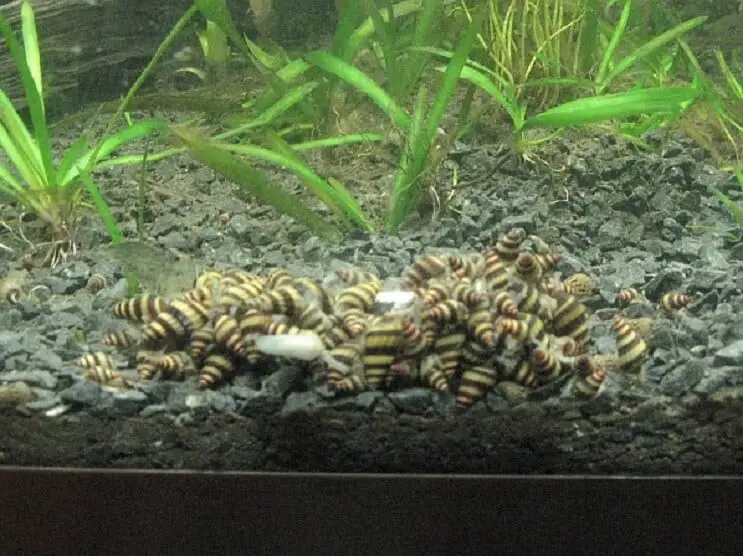
Assassin snails are egg layers. While easy to breed, this species reproduces at a slow rate, laying only one egg at a time.
Fishkeepers interested in breeding assassin snails should buy a group of six or more to increase the odds of having both females and males.
To induce breeding:
- Gradually raise the temperature by a few degrees and provide a protein-rich diet.
- Put the snails into a separate breeding tank to give the eggs the best chance of survival. Add a fine substrate and structures with hard surfaces, like rocks and driftwood, for the female to lay her eggs on.
- A pair locks together for up to 12 hours while copulating.
- The female then lays square-shaped individual egg capsules which are yellow, translucent, and around 1.0 to 1.5 millimeters in size. Assassin snail eggs hatch within three to eight weeks.
Juvenile assassin snails burrow in the substrate and reach sexual maturity at six months.
Tank Mates
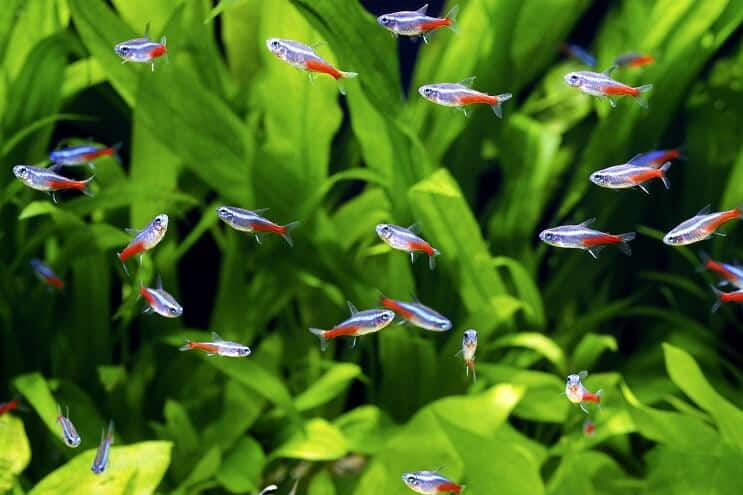
Despite their killer reputation, assassin snails won’t attack or disturb species larger than them. The snails are well-suited to community tanks with docile fish that share similar water preferences.
Ideally, tank mates should inhabit the top and middle levels of the aquarium.
Great tank mates for assassin snails include:
- Cory catfish
- Freshwater clams
- Cherry barbs
- Danios
- Guppies
- Tetras
- Certain species of shrimp (like bamboo shrimps and ghost shrimps)
Avoid keeping these snails with boisterous fish and snail-eating species. Large bottom-dwelling fish, which are known to disturb snails, should also be avoided.
Should You Get an Assassin Snail for Your Aquarium?
The assassin snail has an eye-catching appearance and helps get rid of unwanted pests in the tank. This species can tolerate a range of water conditions, won’t eat or uproot plants, and is generally peaceful, making it suitable for community tanks or planted aquariums.
You should consider getting an assassin snail if your tank holds at least 10 gallons and has a soft, fine-grained substrate. Don’t get one if you struggle to keep water parameters stable or house boisterous fish in your tank.
With the right care and tank setup, the assassin snail will thrive and bring a pop of color to your home.

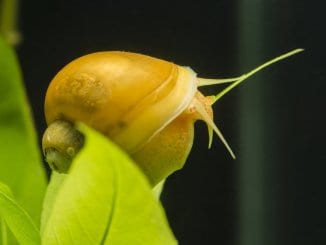
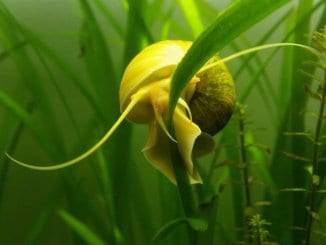
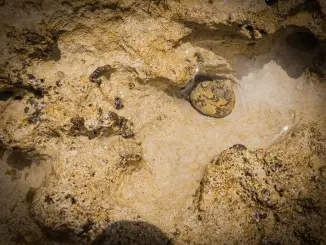
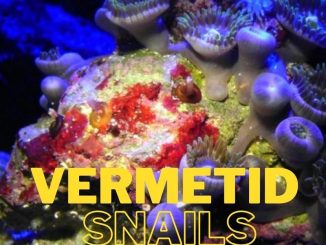
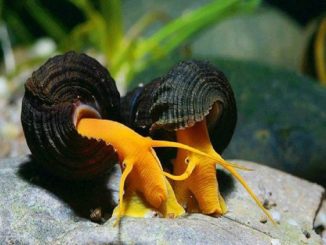
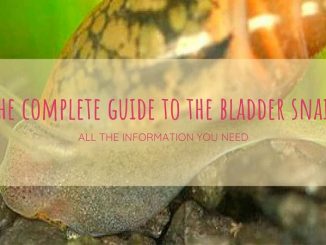
We have a few f8 puffers and keep a separate tank with pond snails, ramshorns and trumpet snails.
Population of snails went from 30 to 300 in weeks. 1 assassin snail and 2 months later the tank was virtually empty.
5 stars for pest control. They’ve also left the nerite and mystery snails alone so far. I’d imagine any snail with a
trap door is safe.
They are not safe. I’ve had them stick there siphon in the middle of the shell that seeps in the venom and if it gets knocked over this nails will eat the trap door and when Miss Nail gets up to crawl or move the assassin snail keeps on with its than him until they’ve killed my mystery snail
Started with 5 assassin snails in a 125g. They certainly got rid of the pesky MTS outbreak I had but in no time, my MTS problem became an assassin snail problem. I had hundreds if not thousands of snails. When upgrading my aquarium, I was too scared to carry over anything & had to start again. Beware if you have a healthy tank. These things breed like mad.
Great article…Thanks
I bought 4 assassins to combat a massive pest snail problem I had. They got rid of the pest snails but now I have have 100s of baby assassins. They are no trouble and r fun to watch when u put some bloodworms in. In my experience they do breed very quickly
I had some pond snails hitchhike into my Betta’s tank, which quickly turned into a LOT of snails…so I got an assassin. He/she has been slowly cleaning the tank of ponds since my Betta apparently won’t eat them. He is definitely nocturnal and it’s always a treat to see him out, slowly scooting along the glass.
My tank became inundated with minute snails / never ever seen so many/and was removing at least 30 each morning by hand. I tried small traps, carrot on a string nothing worked. The aquatic shop staff suggested pygmy loach and assassin snails. I bought 5 pygmy loach which are great fun to watch and certainly reduced the snail population. I then bought 5 assassin snails online and my tank is clear of the snail infestation.The snails are peaceful and breeding to the extent I have given some to a young aquarist who is enjoying them as much as he enjoys his fish. They never touch the shrimp in the tank and all get along together. My 2 lemon, blue eyed, cat fish help clean the glass. I do a 25 gallon weekly water change when I remove dead leaves and prune back plants. Otherwise just sit back and enjoy them all.
So I added about 10 assassin snails to my tank. A couple days later I can only find 3-5 at a time? Do they hide or burry themselves?
They do bury themselves in the sand/gravel. Mine would go missing for days and there they were again.
iam thinking of getting a couple otocinlus but I have three assasins in the tank I have a 20 gal L tank will this be ok and or compatible
Two assassin snail was there, then they died, when i put new set of plants, few pest snails came, then one assassin snail came from no where, it looks different, the snail is pest snail but the shell is of assassin snail, then lot of similar kind of baby assassin snails, i guess assassin snails can interbreed with pest snails…
Not sure if my snails are dead, but 2 of them together and there is a lot if white fur around them?
I bought 5 to deal with my huge population of trumpet snails. They are doing an admirable job of this. PLUS, Assassins are just nice to look at.
I have a 5 gal tank L with mainly a Betta. Bought some Neo shrimp at first with 6 Malaysian trumpets and in 2 months, they bred like CRAZY!! They’ve eaten any red root floaters I had bought and are now trying to eat my frogbit. I decided to buy some Assassin snails online and preparing to buy them food for after they finish off my infestation. I do plan to buy (or get for free) pest snails from a local pet store to feed them later or, either specific food for them. Can’t WAIT to see them in action soon!
I bought 3 assassin snails for my tank and so far I have them in a quarantine tank because the tank the pet store the fish had Cotten mouth and assassin snails can’t get it but their shells can carry the water so I have them in quarantine for a couple of days but I’m looking forward to adding these beauties to my tank!! Hopefully they’ll eat all my pets snails!
Can any combination of assassin snails, clown loach and shrimp work in harmony?